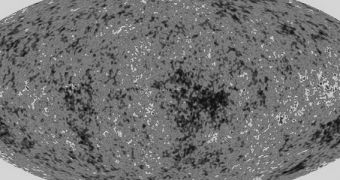An international group of astronomers is currently proposing a modification to the theory of general relativity. The effort is meant to solve a long-standing theoretical problem related to the discrepancies observed between the predicted and observed values of the cosmological constant. The new proposal naturally results in a small, positive constant, elegantly solving some very complex issues.
The investigation was conducted by University of California in Davis (UCD) expert Nemanja Kaloper and colleague Antonia Padilla, from the University of Nottingham, in the United Kingdom. Details of the work appear in the March 6 issue of the esteemed scientific journal Physical Review Letters.
Both the new proposal and the issues it tries to solve stem from the fact that the vacuum of space is not actually empty. Countless elementary particles spring into existence, clash, annihilate each other, and disappear in all corners of the Universe, creating an energy that should allow the vacuum to bend space and time.
This is a natural consequence of Albert Einstein's famous theory of general relativity. If mass and energy are two parts of the same whole, then both should be able to distort spacetime. While matter can do this, vacuum energy has never been observed in the act, ArsTechnica reports.
What Kaloper and Padilla are proposing is a modification to general relativity from which a small cosmological constant naturally follows. The main issue with this constant under existing theories is that the observed value is 10^120 smaller than predictions call for. Astronomers have been trying to figure out where this differences originate from for many years, and this study might help.
The team suggests that the cosmological constant should be interpreted as the average value of vacuum energy contributions throughout all time in space. Under this principle, the amount of energy the local vacuum creates appears twice in the same equation, but with different signs.
This naturally implies that vacuum energy cannot distort spacetime, since it pushes it with one hand, and pulls it with the other. The small cosmological constant we see today may be a result of tiny imbalances in the equations describing the energy of vacuums.
But undoubtedly the main implication of the new theoretical modifications is that the Universe is finite in both space and time, an idea that many theorists are unlikely to adhere to. Gaining a better understanding of how the Universe evolved since the Big Bang may go a long way towards either confirming, or infirming, this idea.
Testing this hypothesis is very difficult, since it is nearly impossible to gather the type of observational evidences required to demonstrate it. Other than figuring out the history of the Cosmos, the only other thing scientists can do is wait around 100 billion years to see if expansion begins to slow down.

 14 DAY TRIAL //
14 DAY TRIAL //